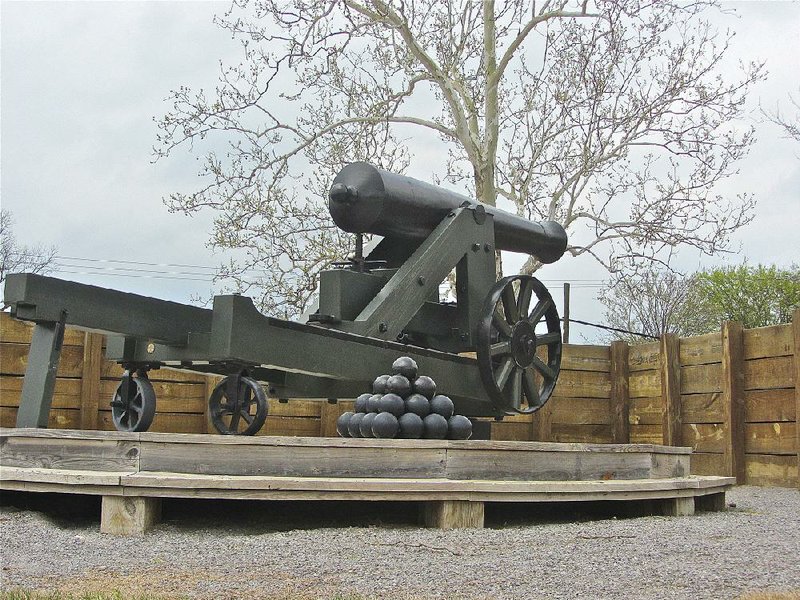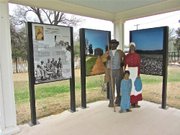HELENA-WEST HELENA -- Commemorations of the Civil War's 150th anniversary are wrapping up this month. And no place in Arkansas has worked harder than Helena to make that bloody four-year struggle of greater interest to visitors.
On July 4, 1863, Helena was the site of a key battle won by Union forces as a harbinger of the conflict's eventual outcome. The war formally ended 150 years ago today, when Robert E. Lee surrendered to Ulysses S. Grant at Appomattox, Va.
Since the Civil War sesquicentennial began in 2011, Helena has identified and marked 27 locations related in some way to the 1863 battle or other wartime activities here. There is even a dedicated website, civilwarhelena.com.
One of the most ambitious projects, New Fort Curtis, at 350 Columbia St., is a reproduction covering three-fourths of the area of the original Fort Curtis. That earthen structure was built after the Union captured Helena in July 1862 and held out against fierce Rebel attacks on Independence Day 1863.
It was the Confederate attempt to recapture the Mississippi River city that sparked the battle. The Encyclopedia of Arkansas History & Culture calls it "as desperate a fight as any in the Civil War, with repeated assaults on heavily fortified positions." Involved were nearly 12,000 troops, with 239 Union and 1,614 Confederate casualties.
One focus of Helena's Civil War presentations would have been highly improbable even a half-century ago, when the Jim Crow aura of white supremacy still lingered in the South.
Information panels at various sites provide details about escaped slaves and other black Arkansans who took shelter under the Union occupation. They were classified as "contraband" and given refuge by the Northern occupiers of places like Helena.
On the city's south edge, at 750 Biscoe St., Freedom Park was the location of a wartime Contraband camp. It is now the first place in Arkansas designated as a National Underground Railroad Network to Freedom site. The park's paths are lined with panels recounting the challenges faced by these newly liberated ex-slaves.
A vivid sense of the fighting on July 4, 1863, is offered atop a hill on the west side of Helena. Cannon and metal silhouettes of combatants mark Battery C, one of four smaller bastions erected by Union forces. It was briefly captured by Confederate troops, the high point of the day's losing battle for the Southerners.
Two cemeteries make worthwhile stops with Civil War resonance. Confederate Cemetery preserves the grave of Gen. Patrick Cleburne, known as "the Stonewall Jackson of the West" and killed in combat in Tennessee. Magnolia Cemetery, established before the war for black burials, is being restored after a long stretch of neglect.
Local Civil War history is also evoked at two well-established facilities, Delta Cultural Center and Helena Museum of Phillips County. There's so much about the War Between the States to see in this struggling Mississippi River community that an exhaustive -- not to say exhausting -- tour can fill a full day.
For more information on area attractions, call (870) 714-2844. Or log on to visithelena.com or civilwarhelena.com.
Lunch options are sparse in Helena, but some of Arkansas' tastiest tamales can be found at Pasquale's Tamales food truck, parked at 1005 W. U.S. 49 in West Helena. For details, visit pascualetamale.com.
Weekend on 04/09/2015

